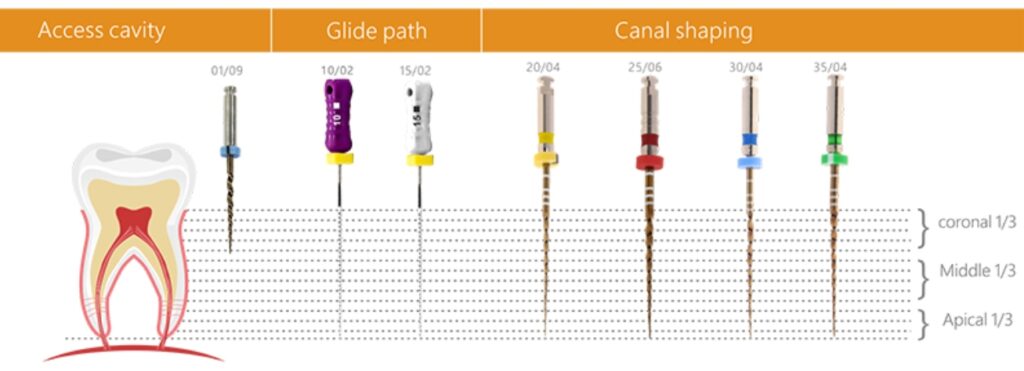
Introduction:
The evolution of endodontic techniques has seen significant milestones, with innovations like the “balanced force” concept paving the way for more refined and efficient root canal preparation. Building upon this foundation, the introduction of reciprocating motion with Super Flexi Rotary Files represents a quantum leap in endodontic instrumentation, promising heightened precision, enhanced safety, and streamlined workflow. This article explores the transformative potential of reciprocating motion with Super Flexi Files through a blend of historical insights, scientific principles, and a compelling clinical case study.
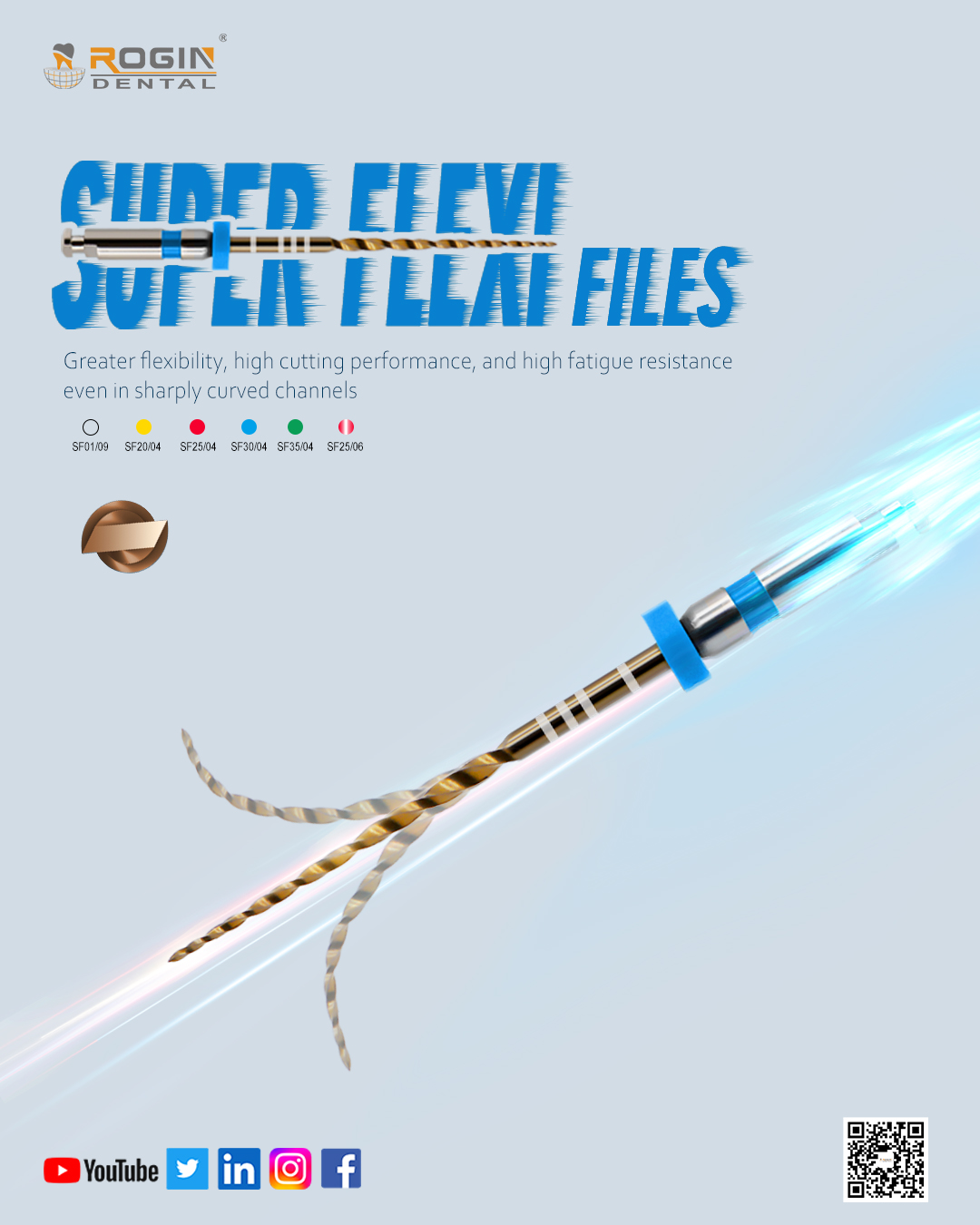

Balanced Force Concept:
The groundbreaking work of Rogin and colleagues introduced the concept of “balanced force,” fundamentally changed how we approach endodontic procedures. Their meticulous refinement of file placement, cutting, and removal through specific rotation marked a significant advancement in canal preparation. This approach emphasized the importance of both clockwise placement and counterclockwise cutting rotations, laying the foundation for further innovations in endodontic instrumentation, including the development of reciprocating motion techniques.
The Emergence of Reciprocating Movement with rotary files:
Dr. Yared’s groundbreaking research represents a major breakthrough in the advancement of endodontic instrumentation. Through meticulous study of file rotation angles and torque, Dr. Yared pinpointed the optimal movement for root canal preparation: a forward angle of 144° followed by a reverse rotation of 72°. This pivotal discovery laid the groundwork for the creation of reciprocating files, ushering in a new era of precision and efficiency in endodontics.
Clinical Case Study:
At Crete Endodontics Endodontic Specialist Referral Clinic, we use ROGIN rotary files in reciprocating motion for the challenging root canal treatment cases with abrupt curvatures, limited mouth opening etc. This increases the safety and prevents file separation to the highest degree.
Now, let’s take a look at a specific case. A middle-aged female patient came to us with irreversible pulpitis and symptomatic apical periodontitis associated with the UL7 tooth. Using the remarkable flexibility and cutting efficiency of Super Flexi Rotary Files, we were able to navigate through difficult root canal anatomy effortlessly, achieving excellent shaping and disinfection results. The use of reciprocating motion, with a 150° attack angle followed by a 30° relief angle, made the instrumentation process smooth and seamless, even when dealing with the complexity of an independent mb2 canal. This case was performed in a single visit and the patient was symptom free within a few hours after the treatment.
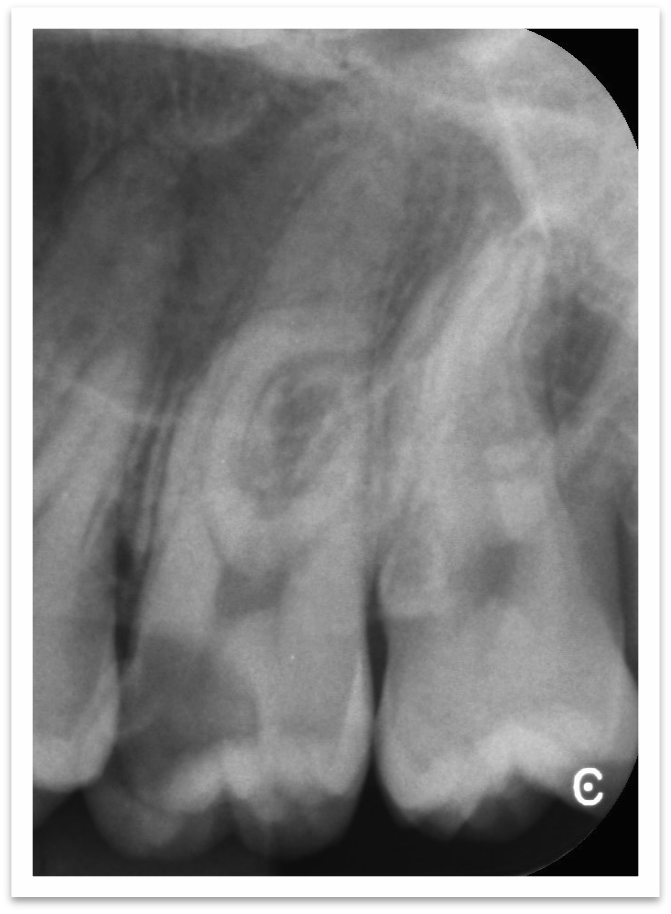

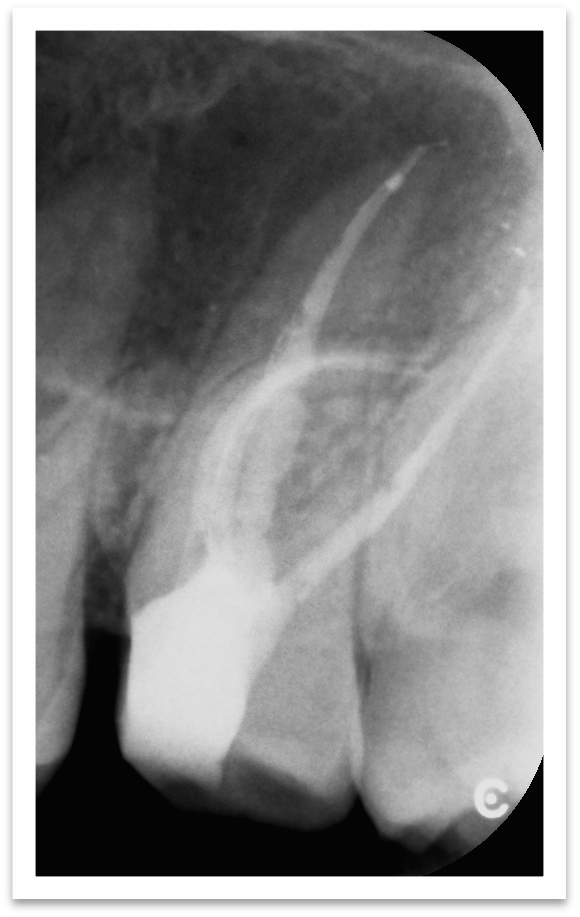

Which are the Key Advantages of Reciprocating Motion:
- Simplified Glidepath Establishment: Reciprocating motion reduces the need for rigorous manual glidepath preparation, streamlining the treatment workflow. (De- Deus et al. 2013)
- Enhanced Instrument Lifespan: Studies have demonstrated the longevity of instruments used in reciprocating motion, minimizing the need for frequent replacements. (De-Deus et al.2010, Kiefner et al.2014)
- Versatility in Canal Complexity: Reciprocating files exhibit remarkable resilience, making them suitable for a wide range of canal morphologies.
- Exceptional Safety Profile: With proper technique and experience, the risk of file fracture is substantially reduced, ensuring predictable outcomes and patient safety. (Bueno et al 2020)
- Conservative Coronal Preparation: Reciprocating motion preserves coronal tooth structure, minimizing the need for aggressive coronal flaring.
- Optimized Workflow Efficiency: By reducing the number of technical stages and instruments required, reciprocating motion enhances treatment efficiency and clinician’s productivity.
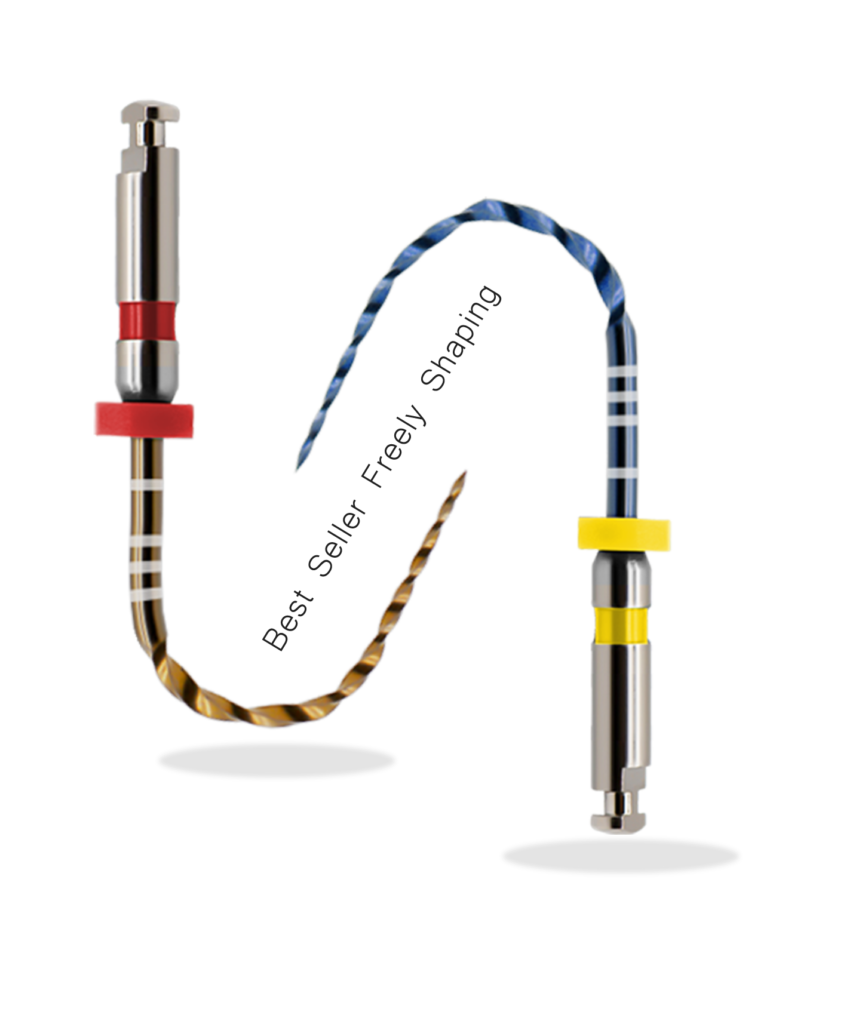
Of course, Super Flexi Rotary Files has many other cases worthy of reference in the clinical practice of many of dentist:
As we strive for excellence in endodontics, the incorporation of reciprocating motion with Rotary Files marks a significant milestone. This technique empowers clinicians to navigate the intricate root canal anatomy with precision, efficiency, and confidence. As we push the boundaries of what’s achievable in endodontics, reciprocating motion reflects our steadfast dedication to improving patient care and enhancing clinical outcomes. Another positive result of this technique is the need for less files as they can be skipped. Sometimes, a single file can be used for the whole treatment.
Authors: Dr. Antonios Glynis (UK DMD, MSc Endodontics)
Efficient Treatment of a Complex Lower Molar Using Rogin Super Flexi Files

Case study by Dr. Nebras Aldahash, BDS. INT Speaker
Introduction:
Root canal treatments vary widely due to anatomical differences between teeth. Lower and upper molars often present curved canals, placing stress on rotary files and increasing the risk of file separation. This case involves a lower molar with two severe canal curvatures and an unusually long root, measuring 27 mm. We will highlight the use of Rogin Super Flexi Files, renowned for their flexibility, which allows for efficient preparation while respecting the canal anatomy.
Case Report:
Patient History & Clinical Examination:
A 29-year-old female presented with sharp night pain in the lower left region. Painkillers provided temporary relief. A cold test revealed that tooth #36 was the source of her pain, with a deep cavity reaching close to the pulp chamber. X-rays confirmed that the caries were extensive.
Diagnosis & Treatment Planning:
Diagnosis: Symptomatic irreversible pulpitis. The treatment plan involved creating an access cavity, followed by thorough biomechanical preparation with irrigation. Rogin Super Flexi Files were used to navigate the curvatures without separation, ensuring a smooth glide path for shaping, and the procedure concluded with a modified hot obturation technique using bioceramic sealer.
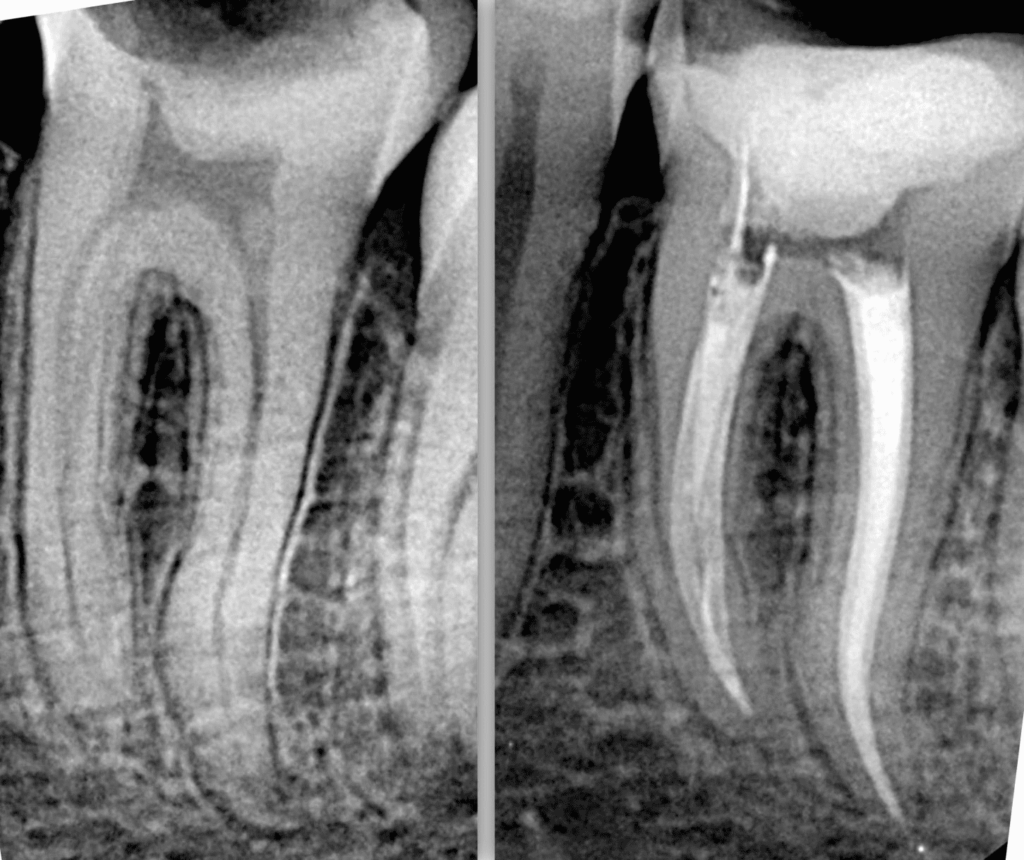
Procedure:
Access Cavity & Canal Identification:
All caries were removed using a diamond round bur, followed by complete deroofing with an Endo Z bur to achieve straight-line access to the four canals (2 mesial and 2 distal).
Canal Cleaning & Shaping:
The canals were initially explored with a K-file #10, followed by coronal flaring using the Rogin orifice opener. Working length was determined, and a glide path was created using the Rogin #15 rotary file. Canal shaping was completed using 20.04 and 25.04 Rogin Flexi Files with copious irrigation (5.25% sodium hypochlorite). Rogin Flexi Files exhibited excellent flexibility and cutting efficiency, vital for navigating the severe canal curvatures.
Obturation:
Warm obturation was performed using a bioceramic sealer with high pH and dimensional stability. Postoperative radiographs confirmed complete obturation without voids.
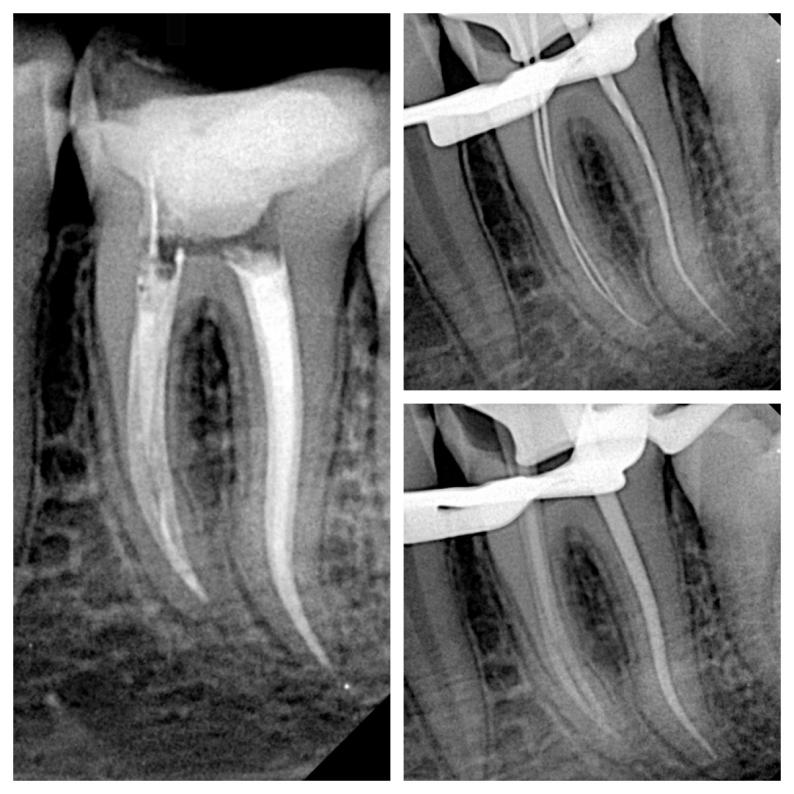
Discussion:
For complex cases involving curved and long canals, selecting flexible heat-treated files is crucial. Rogin Super Flexi Files, with their unparalleled flexibility and fatigue resistance, excel in these scenarios. The master file (25.04) provided precise preparation while respecting the anatomical challenges of this case. The file’s flexibility prevented common errors such as ledge formation, transportation, and separation.
Case study by Dr. Nebras Aldahash, BDS. INT Speaker
ABSTRACT
Endodontic treatment of upper molars presents numerous challenges, such as missed canals, limited visibility, abnormal canal anatomy, restricted mouth opening, and accessibility issues. This article presents a detailed account of the successful management of an upper molar using Rogin Super Flexi Files, outlining the procedure from A to Z. The performance of the Rogin system highlights its efficiency and reliability in these complex cases.
INTRODUCTION
The success of endodontic treatment depends on minimizing bacterial presence and disinfecting the entire pulpal system using irrigants. For irrigation to be effective, all canals must be prepared, including the MB2 canal, which is often a major cause of root canal failure in upper molars.
This case report details the preparation of a maxillary first molar with four canals, including the MB2, using the Rogin Super Flexi File system.
CASE REPORT
Patient History and Clinical Examination
A 31-year-old female patient presented with severe, sharp night pain in the upper right posterior region for a few days. Tenderness on percussion was noted in the maxillary first molar (#16). Clinical examination revealed healthy teeth, but radiographic evaluation showed hidden proximal distal caries.
Diagnosis and Treatment Planning
The diagnosis was symptomatic irreversible pulpitis with apical periodontitis, confirmed by vitality testing, percussion testing, and a thermal cold test using ethyl chloride ice spray. The pain persisted for several minutes after stimulation.
The treatment plan involved root canal treatment, including removal of all caries, access opening, canal preparation and disinfection using Rogin Super Flexi Files, followed by obturation to achieve apical and coronal seal.
Procedure
1. Access and Canal Identification
An access cavity was created using a long-shank round bur and refined with an Endo Z bur. A diamond-coated ultrasonic tip was used to achieve straight-line access. X-ray analysis indicated a thick mesiobuccal root, suggesting a high likelihood of an MB2 canal.
All canals were located, but identifying the MB2 canal was particularly difficult due to its narrowness. With the aid of a dental microscope and an ultrasonic device, the dentin shell covering the MB2 was removed, allowing its identification.
2. Canal Cleaning and Shaping
All four canals (MB1, MB2, DB, and P) were cleaned and shaped using the Rogin system. The Rogin files allowed thorough debridement of the canals, effectively removing residual debris.
3. Irrigation Protocol
The irrigation protocol included 5.25% sodium hypochlorite, activated and heated for continuous replenishment, followed by a final rinse with EDTA to remove the smear layer and ensure disinfection of lateral canals.
4. Obturation
The canals were dried using absorbent paper points at working length. The obturation technique used was a hot modified technique with bioceramic sealer. Cone fit was confirmed via X-ray, and the sealer was injected slowly into all canals. Hydraulic condensation was achieved with the master cones.
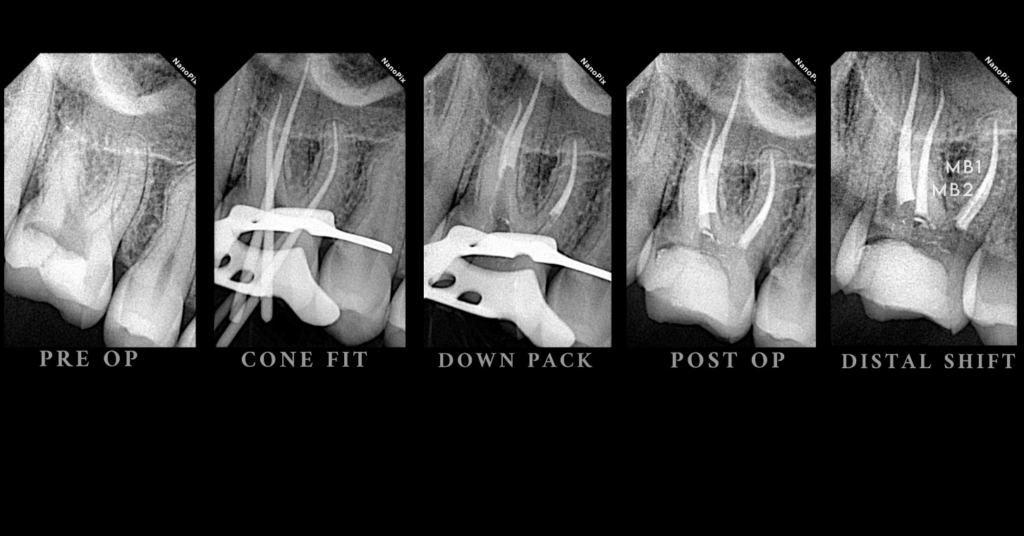
This case highlights the importance of locating and treating the MB2 canal, as it can have its own apical foramen, distinct from MB1. Missed canals, particularly MB2, are a common cause of endodontic failure in upper molars.
The master file used for biomechanical preparation was size 25.04 for all canals, except the palatal canal, which was prepared to size 35.04. Rogin Super Flexi Files performed efficiently, respecting the natural anatomy of the canals and providing excellent cutting ability.
Key Features of Rogin Super Flexi Files:
- Flexibility: The files’ exceptional flexibility ensures safe navigation through curved canals, reducing mishaps.
- Cutting Efficiency: The files effectively remove dentin debris while maintaining efficient shaping.
- Fracture Resistance: Rogin Super Flexi Files are highly resistant to cyclic fatigue, making them ideal for complex cases.
Conclusion:
In challenging endodontic cases, selecting the right rotary files is crucial. Rogin Super Flexi Files proved to be an excellent choice, allowing for safe and efficient canal preparation. Their unique parallelogram cross-section and NiTi alloy with heat activation provided remarkable flexibility, cutting efficiency, and fracture resistance. These files ensured a successful outcome in this complex case, as demonstrated by the radiographs.

Case study by Dr. Nebras Aldahash, BDS. INT Speaker
ABSTRACT
In endodontic retreatment cases, practitioners often encounter various challenges, including difficulty reaching the full working length of canals, blocked or ledged canals, and incomplete root canal fillings. This case report details the use of Rogin Rotary File System to overcome such obstacles, focusing on the protocol followed to successfully remove gutta-percha and achieve proper canal preparation.
INTRODUCTION
Retreatment cases are among the most challenging in endodontics, often requiring complete removal of previous obturation materials, elimination of resistant bacteria, and correction of issues such as ledges and inadequate canal shaping that compromised the initial treatment. In this case, we used Rogin Retreatment Files to remove gutta-percha and Rogin Super Flexi Files to prepare the canals and bypass a ledge previously found in the buccal canal.
CASE REPORT
Patient History and Clinical Examination
A 19-year-old male patient presented with persistent dull pain and discomfort in the upper right posterior region for several months. Clinical examination of tooth No. 14 revealed periapical inflammation, tenderness on percussion, and radiographic evidence of a well-defined apical radiolucency and inadequate obturation.
DIAGNOSIS AND TREATMENT PLANNING
The diagnosis was symptomatic apical abscess secondary to failed root canal treatment. The treatment plan involved nonsurgical retreatment to remove all gutta-percha using Rogin Retreatment Files, restore the buccal canal pathway, prepare the canals with Rogin Super Flexi Files, thoroughly disinfect, and finally obturate using a hot obturation technique with bioceramic material.
PROCEDURE
Access and Canal Identification
An access cavity was prepared, and canal presence and pathways were confirmed under a microscope to ensure accurate visualization and detail.
Canal Cleaning and Shaping
To remove the gutta-percha, we used Rogin Retreatment Files at a speed of 500 RPM, without the need for solvents, and reached the full working length. Manual files were employed to re-establish the original buccal canal path, allowing us to bypass the ledge. All canals were subsequently prepared with Rogin Super Flexi Files, irrigated with 5.25% sodium hypochlorite, and finished with 2% chlorhexidine for activation and final rinsing.
Obturation
After achieving a dry, clean canal, obturation was performed using the continuous wave compaction technique with gutta-percha and bioceramic sealer. The final radiograph confirmed complete canal obturation.
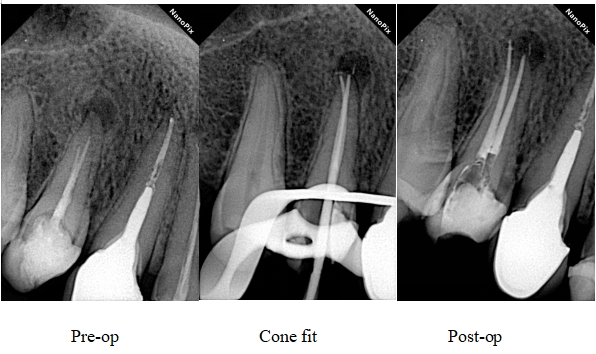
DISCUSSION
Successful retreatment demands skill and reliable tools. The Rogin Retreatment Files proved highly efficient in gutta-percha removal, and manual files enabled us to re-establish full working length. The retreatment was accomplished professionally and effectively, demonstrating the value of the Rogin system.
KEY FEATURES OF THE ROGIN SYSTEM CONTRIBUTING TO POSITIVE OUTCOMES
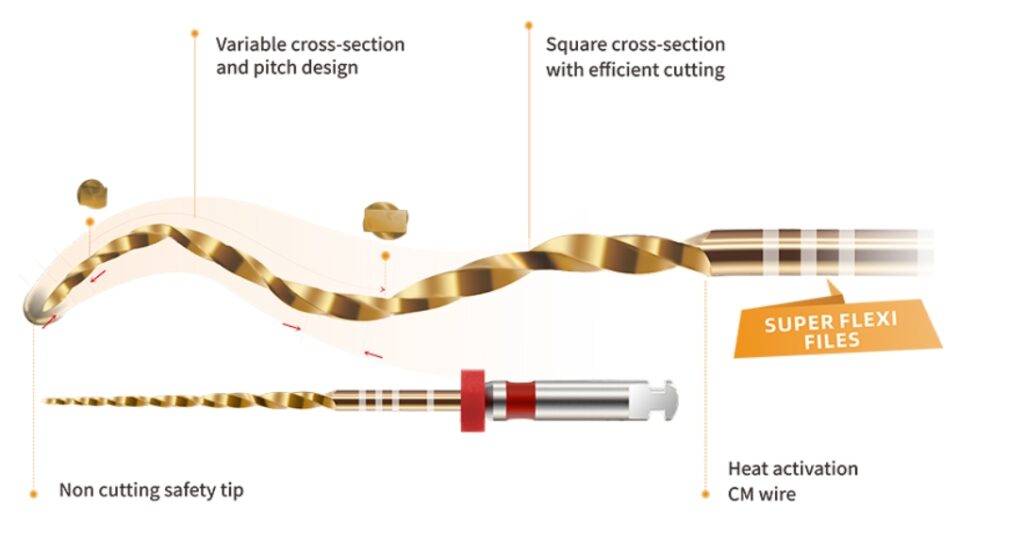
CONCLUSION
In endodontic retreatment cases, it is critical to fully remove remnants of previous obturation materials, which requires appropriate tools and thorough biomechanical canal preparation to the anatomical apex. Achieving accurate working length determination and effective cleaning are vital for successful outcomes.
